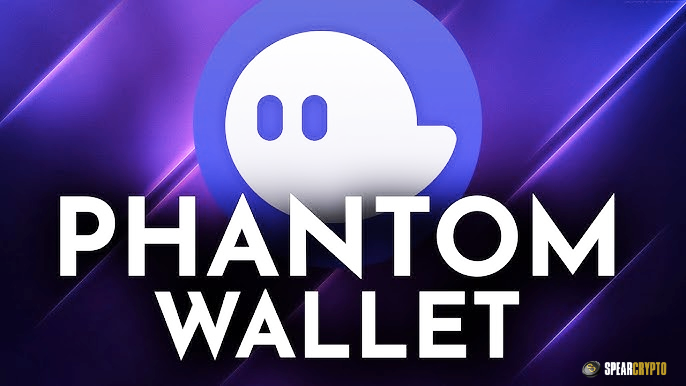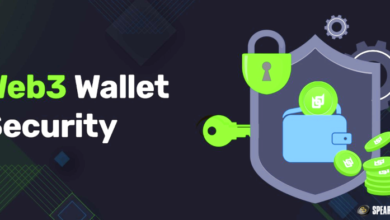
Web3 wallets are becoming indispensable tools for individuals who wish to interact with the blockchain ecosystem as the world continues to develop into a more decentralized environment. It is essential to comprehend the features of Web3 wallets, regardless of whether you are a seasoned cryptocurrency trader or a novice who is interested in digital assets. This comprehensive guide will explore the following: the definition of Web3 wallets, their functionality, their primary attributes, security concerns, and the most effective Web3 wallet applications currently available.
What is a Web3 wallet?

A Web3 wallet is a digital tool that enables users to store, administer, and interact with decentralized applications (dApps) and cryptocurrencies. In contrast to conventional wallets, which are primarily utilized for fiat currency, Web3 wallets function as gateways to the decentralized internet, which is referred to as Web3. By facilitating transactions, providing access to decentralized finance (DeFi), and storing non-fungible tokens (NFTs), they facilitate user engagement with blockchain technology.
Key Characteristics of Web3 Wallets
It is essential to comprehend the fundamental characteristics of Web3 wallets in order to make well-informed decisions. The following are a few of the most critical components:
- Non-Custodial Nature: You have complete control over your private keys with a Web3 wallet, which means that only you can access your funds. This non-custodial feature is essential for decentralization, as it precludes third parties from holding or controlling your assets.
- Cross-Chain Compatibility: Users can manage a diverse array of digital assets across various ecosystems from a singular interface, as numerous Web3 wallets support multiple blockchain networks. This cross-chain functionality is becoming increasingly significant as the blockchain space continues to expand.
- Decentralized Application Integration: Web3 wallets facilitate seamless interaction with decentralized applications (dApps). Users can utilize their wallet to authenticate transactions while engaging with a variety of services, including lending, borrowing, gambling, and trading.
- Enhanced Privacy and Security: Advanced encryption techniques are frequently employed by Web3 wallets to safeguard sensitive information, with a focus on user privacy and security. This represents a substantial departure from conventional banking systems, which typically necessitate personal information.
Anecdote: The transition to digital transactions
Sarah is an example of a user. She was previously inundated by the intricacies of online transactions; however, she has recently begun utilizing a Web3 wallet. Sarah is currently engaged in a decentralized marketplace, where she trades NFTs with ease and obtains the tranquility that is associated with controlling her private keys. Web3 wallets have revolutionized her digital interaction landscape, enabling her to investigate new financial opportunities while maintaining control.
How Do Web3 Wallets Work?
Understanding how Web3 wallets function is essential for leveraging their capabilities effectively. Here’s a breakdown of the underlying mechanics:
1. Private and Public Keys
A pair of cryptographic credentials, the public key and the private key, are generated by each Web3 wallet. In the same way as your email address, the public key can be shared with others in order to receive funds. Nevertheless, the private key is akin to a password—it is crucial to maintain its secrecy and security, as it enables you to access and administer your assets.
2. Wallet Interface
The majority of Web3 wallets are equipped with user-friendly interfaces that allow you to interact with dApps, view your balances, and review your transaction history. Some purses even have built-in exchanges that allow users to exchange tokens directly.
3. Connecting to dApps
Authentication of your identity is accomplished through the use of a Web3 wallet to establish a connection to a dApp. This procedure is frequently executed by means of a straightforward prompt that requests authorization for the dApp to access the public address of your wallet and execute transactions.
Web3 Wallet Apps: The Best Options Available
With a plethora of Web3 wallet apps available, choosing the right one can feel daunting. Here are some of the top contenders worth considering:
1. MetaMask

Perhaps the most widely used Web3 wallet, MetaMask is predominantly recognized for its browser extension. It is an exceptional option for users who are involved in decentralized applications (dApps) such as OpenSea and Uniswap, as it supports Ethereum and Ethereum-compatible networks. MetaMask is an excellent starting point for newcomers, as it offers an intuitive interface and extensive community support.
2. Trust Wallet

Trust Wallet, the official wallet of Binance, enables users to engage with a diverse array of dApps and supports a wide variety of cryptocurrencies. Its mobile-first approach is user-friendly for those who are constantly on the move, and it also includes features such as a built-in DEX (decentralized exchange) and staking.
3. Coinbase Wallet

Coinbase Wallet is a separate entity from the primary Coinbase exchange, providing consumers with full control over their private keys. The wallet is suitable for both novice and seasoned users, as it supports a diverse array of digital assets and offers effortless access to dApps.
4. Phantom Wallet

Phantom Wallet has rapidly acquired popularity among Solana enthusiasts, as it was specifically designed for the Solana blockchain. It is equipped with a user-friendly interface, seamless integration with Solana dApps, and effortless NFT management.
Expert Insight: The Rise of Web3 Wallets
Web3 wallets are emerging as the foundation of the decentralized internet, as per blockchain expert Laura Shin. These wallets are indispensable for individuals who wish to participate in the future of finance, as an increasing number of consumers transition from conventional platforms. This realization underscores the significance of comprehending Web3 wallets in the swiftly changing digital environment.
Web3 Wallet Security: Protecting Your Assets
While the advantages of Web3 wallets are numerous, users must also be aware of potential security risks. Here are some critical security considerations:
1. Protect Your Private Keys
The most critical component of your Web3 wallet is your private key. Losing it results in the loss of access to your funds. Securely store your keys, preferably offline, and contemplate utilizing a hardware wallet for additional protection.
2. Be Wary of Phishing Attacks
In the cryptocurrency sector, phishing schemes are prevalent. It is imperative to verify URLs and refrain from clicking on suspicious links. A red flag is raised when a website requests your private key or seed phrase.
3. Use Two-Factor Authentication (2FA)
Your wallet is fortified with an additional layer of security by enabling two-factor authentication. It is more difficult for unauthorized users to access your account because it necessitates a second form of verification before granting access.Your wallet is fortified with an additional layer of security by enabling two-factor authentication. It is more difficult for unauthorized users to access your account because it necessitates a second form of verification before granting access.
Counterargument: Is Centralization Safer?
Some contend that centralized exchanges offer a more secure environment for the storage of cryptocurrencies. Nevertheless, centralized platforms provide specific safety features; however, they also introduce vulnerabilities such as regulatory risks, breaches, and the potential for losing access to your funds as a result of platform issues. Web3 wallets may necessitate that users assume a greater degree of responsibility for their security; however, they also provide users with genuine possession of their assets.
Future Trends in Web3 Wallets
The future of Web3 wallets is bright, with several exciting trends on the horizon:
1. Enhanced User Experience
We can anticipate substantial enhancements in user interfaces and overall experiences as the crypto space matures. Developers are consistently striving to simplify wallet interactions, thereby facilitating the participation of newcomers.
2. Interoperability Between Blockchains
Cross-chain compatibility will become increasingly important as the blockchain ecosystem expands. Wallets that can facilitate seamless transactions across a variety of networks are likely to acquire a competitive advantage.
3. Integration with Emerging Technologies
Web3 wallets will undergo an evolution to accommodate a variety of new features, such as more advanced NFT administration tools and connections to virtual worlds, as a result of the emergence of DeFi, NFTs, and the metaverse.
Hypothetical Scenario: A Day in the Life with a Web3 Wallet
Web3 wallets will undergo an evolution to accommodate a variety of new features, such as more advanced NFT administration tools and connections to virtual worlds, as a result of the emergence of DeFi, NFTs, and the metaverse.
Conclusion: Embrace the Power of Web3 Wallets
Web3 wallets are a significant advancement in the cryptocurrency and blockchain sector, as they provide users with complete authority over their digital assets and facilitate seamless interaction with decentralized applications. Anyone seeking to prosper in the decentralized economy will require an understanding of the features, security considerations, and best practices for utilizing Web3 wallets as the landscape continues to change.
You can confidently navigate the thrilling world of Web3 and unlock new opportunities for financial freedom and innovation by selecting the appropriate Web3 wallet app, instituting robust security measures, and remaining informed about emerging trends.








